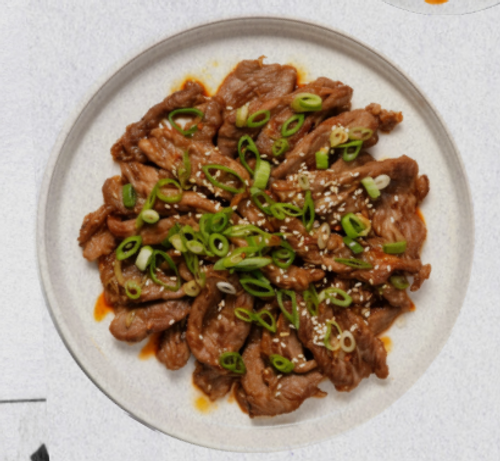A Balanced Meal
A traditional Korean meal is made up of many (small) dishes where each element is meant to balance each other: taste, texture, color, and cooking method are complementary and make for a well-rounded meal.
Let's set the table:
- Bap - cooked rice
- Banchans - vegetable and protein side dishes
- Kimchi - fermented vegetables
- Namul - green vegetables
- Kuk - broth-based dish
- Jang - fermented sauce used to enhance the flavor of banchans
All About That Banchan
"For someone who wants to try different things, I love when you go to a new Korean restaurant and they have a million different banchan* - the variety, the heartiness and really strong delicious flavors. Korean food is also a cleaner way of eating, you’re not weighed down by tons of fats. *Banchan are assorted side dishes always presented at a Korean table, usually one or more kinds of kimchi, sauteed or pickled vegetables, maybe a piece of grilled fish or a soy marinated starch, there is no steadfast rule - they are as numerous as they are delicious." - Chef Clara Park
Let's Talk Kimchi
Kimchi is much more than a traditional dish. It’s an essential element of Korean meals that transcends class and regional differences and helps define and share cultural identity.
"Kimchi is not just cabbage salad — it is essential to the culture of the country. There are hundreds of different varieties of kimchi in Korea, and about 1.5 million tons of it is consumed each year. Even the Korean stock market reflects this obsession: The ‘Kimchi Index’ tracks when Napa cabbage and the 12 other ingredients — chili, carrots, radishes and anchovies among them — are at their best prices.” — NPR / The Kitchen Sisters
On to kimjang - the tradition of making kimchi (and the science behind it).
Fermentation occurs when a chemical reaction is caused between naturally present bacteria on a food and said food’s sugars. This growth of “good” bacteria makes a food less vulnerable to “bad” spoilage-causing bacteria. Plus, there’s no added acid required to get that sour flavor from fermented foods. It’s just 100% natural funk going on. When broken down to the simplest form, you take cabbage (or really any other vegetable), add salt and seasonings. Then time (up to 10 days) and nature do that magical fermentation funky town dance to create something super unctuous with flavors upon flavors of complex spice and umami.
Experiment with Flavor
We asked our Spiceologists for their takes on classic Korean-inspired dishes.
BREAKFAST
Orange Gochugaru Chile Kurobuta Ham Slider with
Blood Orange Marmalade
LUNCH
Bulgogi Beef Skewers with Black & White Sesame Seeds
APPETIZER
Umami Punch Chicken Lettuce Wraps
DINNER
Korean BBQ Chopped Cheese with Rice Cake
SIDES
Sour Power Shacha BBQ Green Beans
DESSERT
Panna Cotta with Korean Chili Flake Brittle
COCKTAIL
Soju Mojito with Orange Gochugaru Chile Rim


